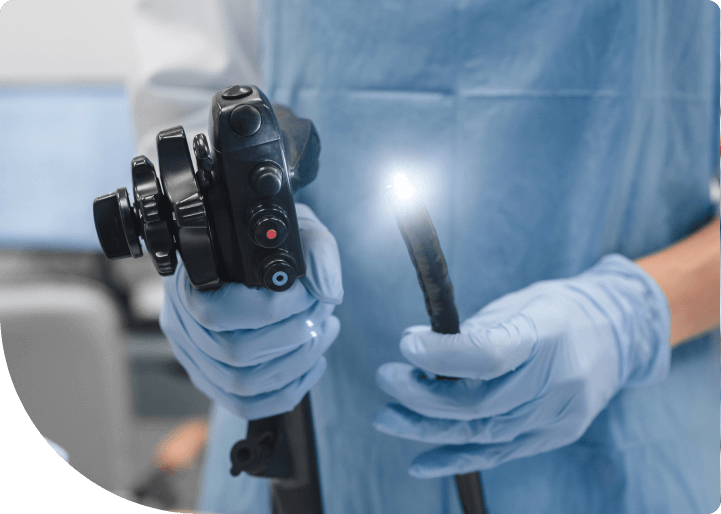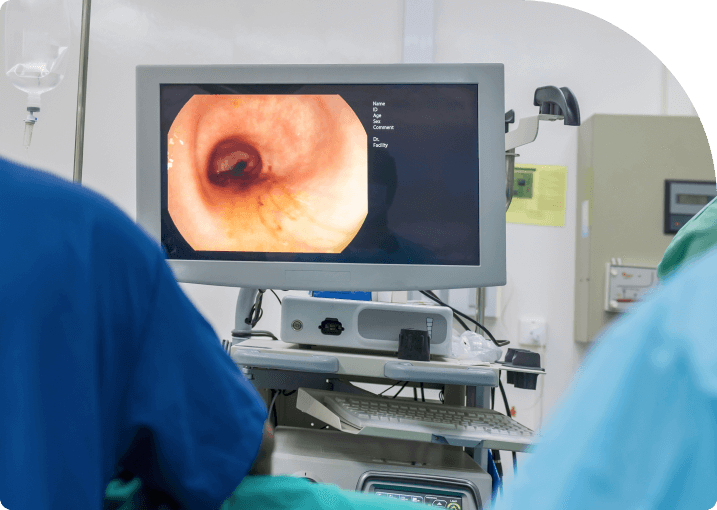The Endoscopy Procedure
Endoscopy: The Key to Gastrointestinal Relief
An endoscopy is a medical procedure that uses a long, thin tube with a light and camera. It allows doctors to directly visualise the internal organs and tissues to diagnose a wide range of conditions. The type of endoscopy differs depending on the body part being examined.
Common Types of Endoscopy

Gastroscopy
A gastroscopy, or upper endoscopy, examines the oesophagus, stomach, and upper part of the duodenum. It is commonly performed to:
- Diagnose causes of abdominal pain, heartburn, or indigestion
- Identify gastric or duodenal ulcers
- Investigate difficulty swallowing (dysphagia)
- Detect bleeding in the upper digestive tract
- Evaluate or monitor gastritis or oesophagitis
- Take biopsies to diagnose H. pylori infection, celiac disease, or cancer

Colonoscopy
A colonoscopy examines the large intestine (colon) and rectum. It is commonly performed to:
- Screen for colon cancer
- Assess for polyps or follow up on previously detected polyps
- Evaluate bowel symptoms, such as abdominal pain or changes in bowel habits
- Investigate anaemia of unknown cause
- Examine for the presence of blood in the stool
- Diagnose inflammatory bowel disease
- Evaluate cases of chronic diarrhoea


